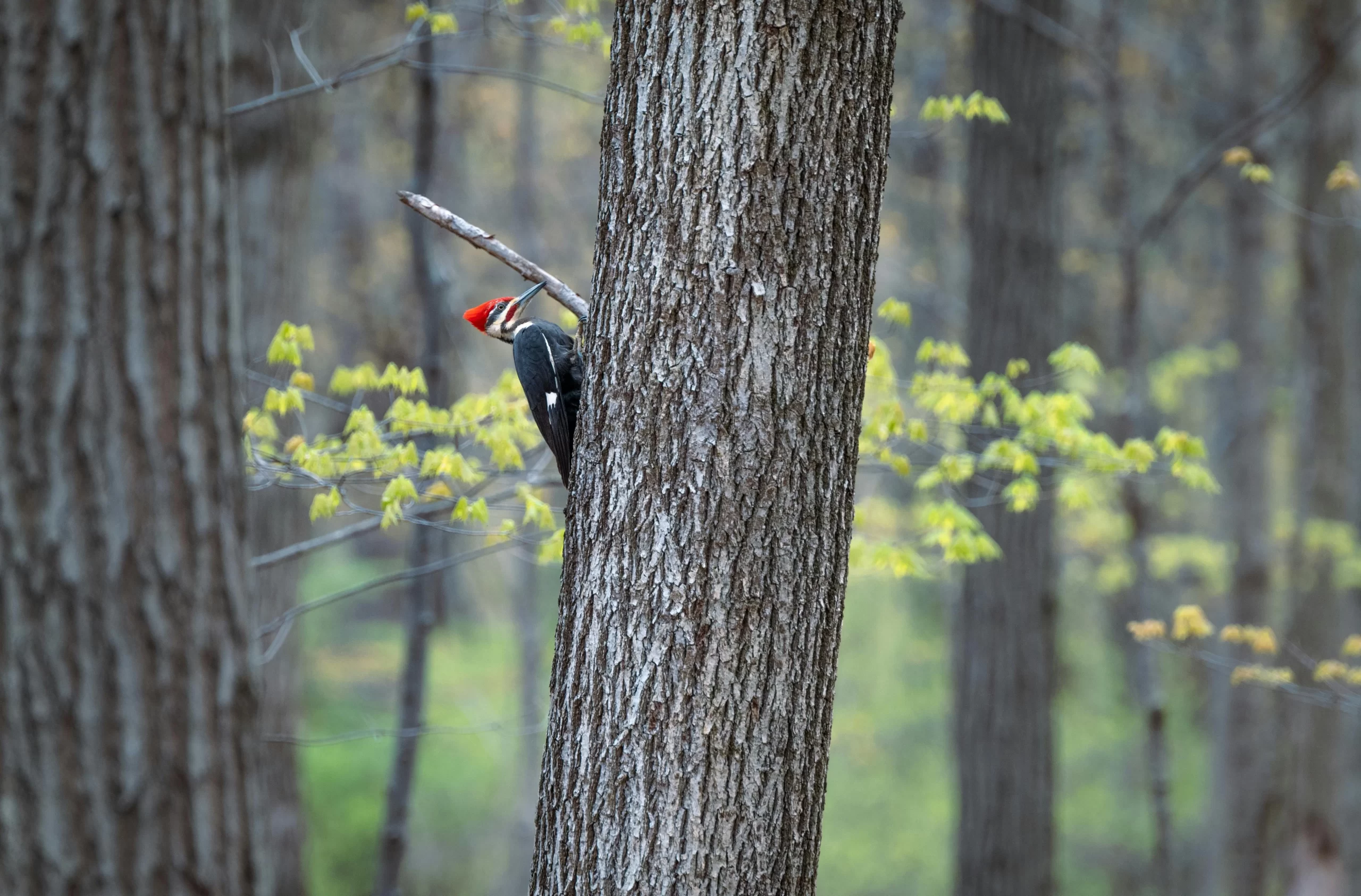Although those who don’t live in Arkansas may not realize it, more than half of the state is covered in forest. This habitat is concentrated in the western, central, and southern portions of the state. While many birds do not thrive in such habitat, these forested areas are very appealing to woodpeckers in Arkansas.
Indeed, the forests of this state are so appealing that they were among the last known refuges for the Ivory-billed Woodpecker. Now, 8 types of woodpeckers in Arkansas call the state home. This number is comparable to surrounding states, and it is far lower than the woodpecker diversity from states out west. If you aren’t familiar with all of the woodpeckers in AR that call the state home, don’t worry – I’m about to discuss all 8 species in great detail. Let’s get started!
Table of Contents
Types of Woodpeckers In Arkansas
Downy Woodpecker
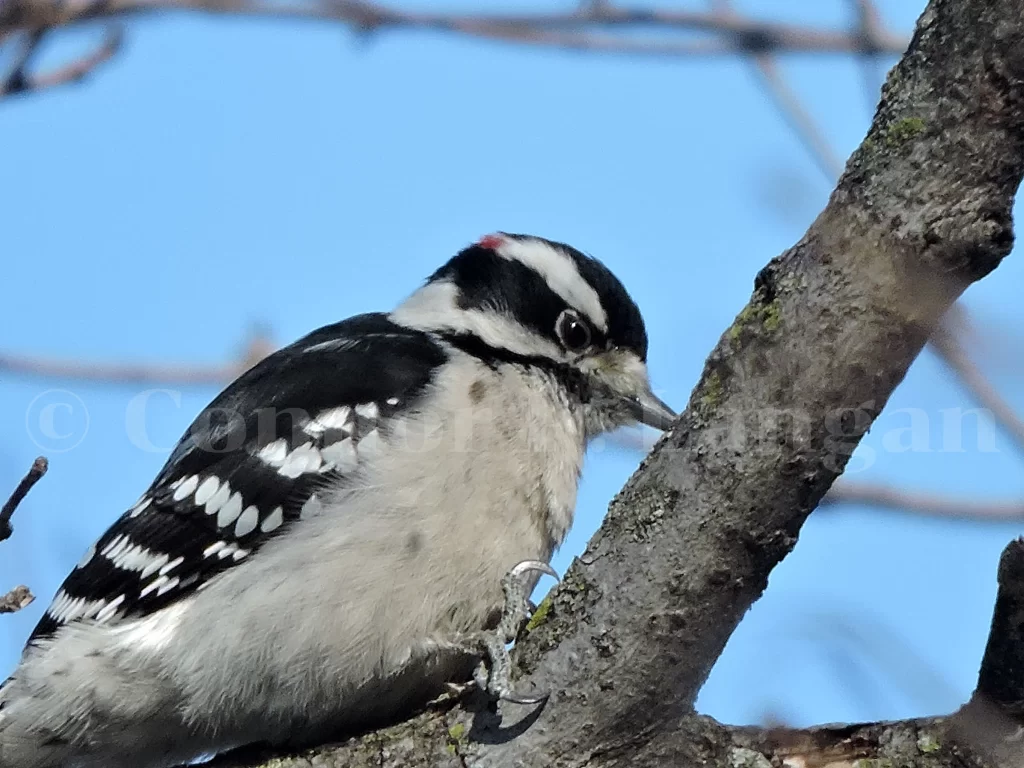
Downy Woodpeckers are small woodpeckers of Arkansas that call the state home all year long. This woodpecker in Arkansas is the tiniest woodpeckers in the state, with all other woodpeckers being noticeably larger.
Although Downy Woodpeckers look a lot like Hairy Woodpeckers, Hairys are larger with bigger bills.
Downy Woodpeckers can be found in all of the state’s forests, but they are more common in hardwood, deciduous forests compared to pine forests. Luckily for these woodpeckers in Arkansas, the majority of Arkansas’s forested land is hardwood forests.
While Downy Woodpeckers are happy to live in forests, they can also flourish in small stands of timber. Moreover, birders may observe them foraging in odd places like roadsides or prairies. Here, they like to extract insects from galls in plants.
Hairy Woodpecker
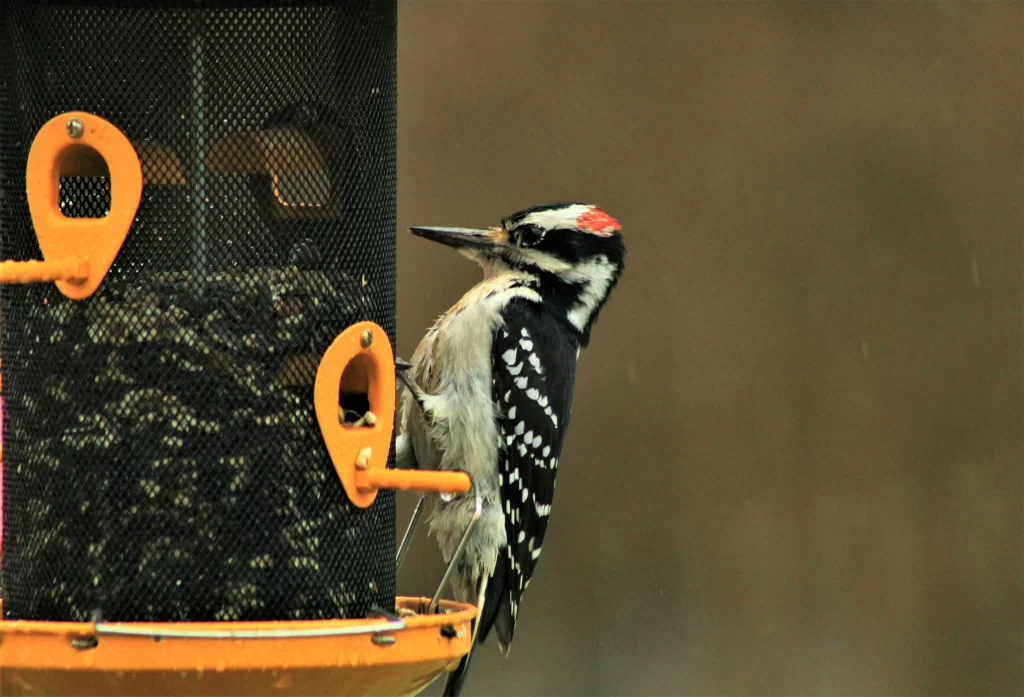
Hairy Woodpeckers look much like oversized versions of Downy Woodpeckers. However, those with keen eyes will notice that this Arkansas woodpecker has a proportionately longer bill compared to a Downy Woodpecker.
There have been nearly 17,000 eBird checklists that include Hairy Woodpeckers submitted in Arkansas. Hairy Woodpeckers are regular in Arkansas but present at low densities. These woodpeckers of Arkansas are more apt to survive in pine forests compared to Downy Woodpeckers. Hairy Woodpeckers are rather evenly distributed throughout the state.
If you can’t get to a forest to look for Hairy Woodpeckers, try to find them in local parks, woodlots, or backyards. They may visit bird feeders to eat suet or grab a few delicious seeds.
Northern Flicker
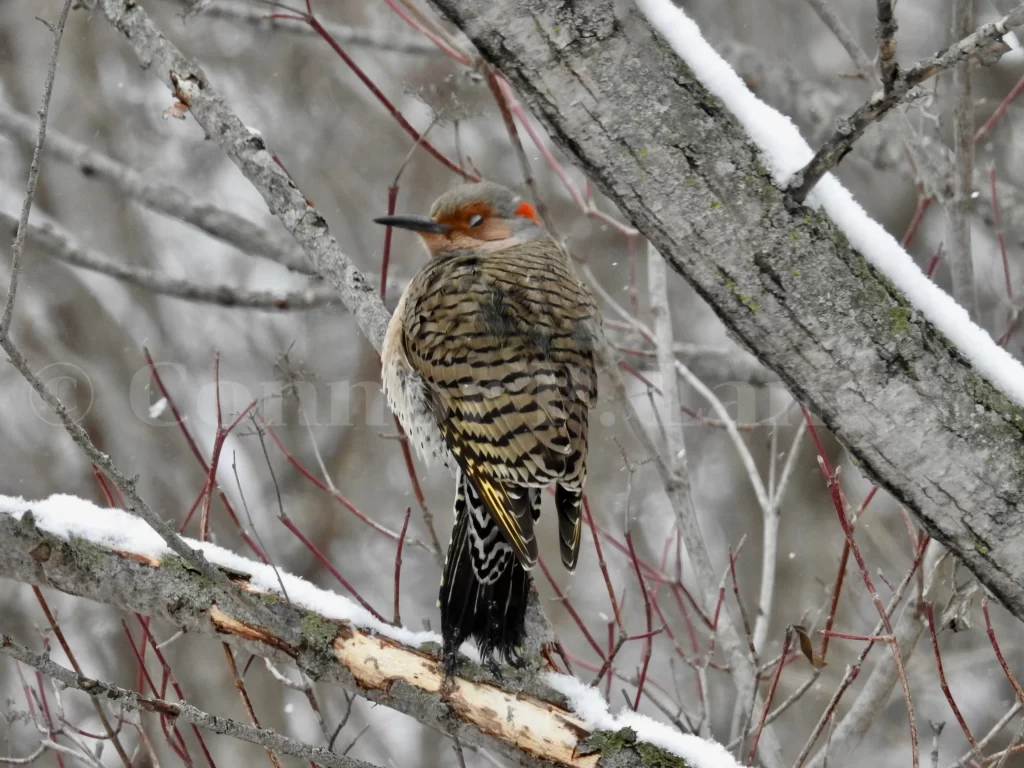
Northern Flickers are the second-largest Arkansas woodpecker. They are rather colorful with their yellow tail feathers, red and gray napes, and tawny stomachs with black spots. If you see one flush, look for its white rump.
Portions of the Northern Flicker population in Arkansas migrate north during the breeding season. Therefore, a small bit in numbers will be expected during the summer, but there will not be a shortage of these common birds in Arkansas during this time.
The largest number of Northern Flickers in Arkansas can be observed in March and October when birds are migrating. These Arkansas woodpeckers forage in semi-open habitats with dead trees, however, they may be observed foraging on the ground in lawns and parks while they’re migrating.
Pileated Woodpecker
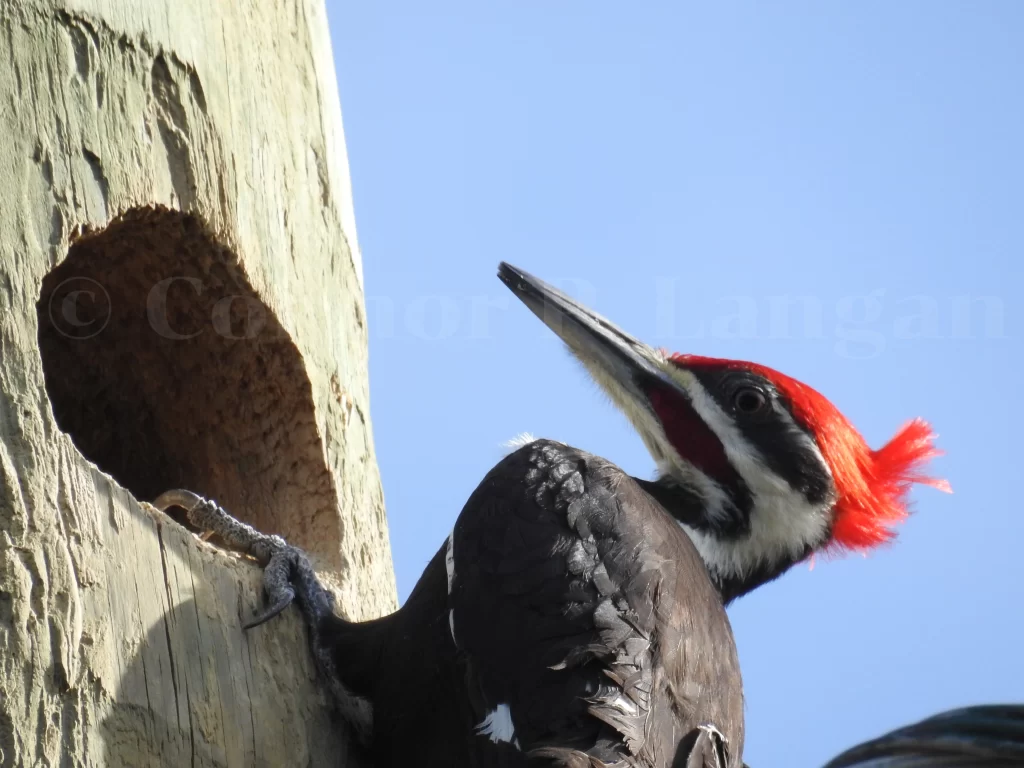
Pileated Woodpeckers are the largest woodpecker in Arkansas. Some who observe Pileated Woodpeckers in Arkansas may be tempted to call them Ivory-billed Woodpeckers due to their massive size, but note the largely dark bills of Pileated Woodpeckers. Moreover, Pileated Woodpeckers have entirely black backs, whereas Ivory-billed Woodpeckers had extensive white on their backs.
Pileated Woodpeckers are numerous in Arkansas, as the extensive forests of the state make for an ideal habitat for them. Although they are large types of woodpeckers in Arkansas, they are found in lower densities than other woodpeckers due to their size.
If you’re struggling to find a Pileated Woodpecker, look for the big, oval-shaped holes that they bore into trees during foraging. These woodpeckers of Arkansas are nonmigratory, and they can also be detected by listening for their chuckle-like calls. Pileated Woodpeckers are vital to Arkansas forest ecosystems as the holes that they excavate are used by mammals, songbirds, and owls.
Red-bellied Woodpecker
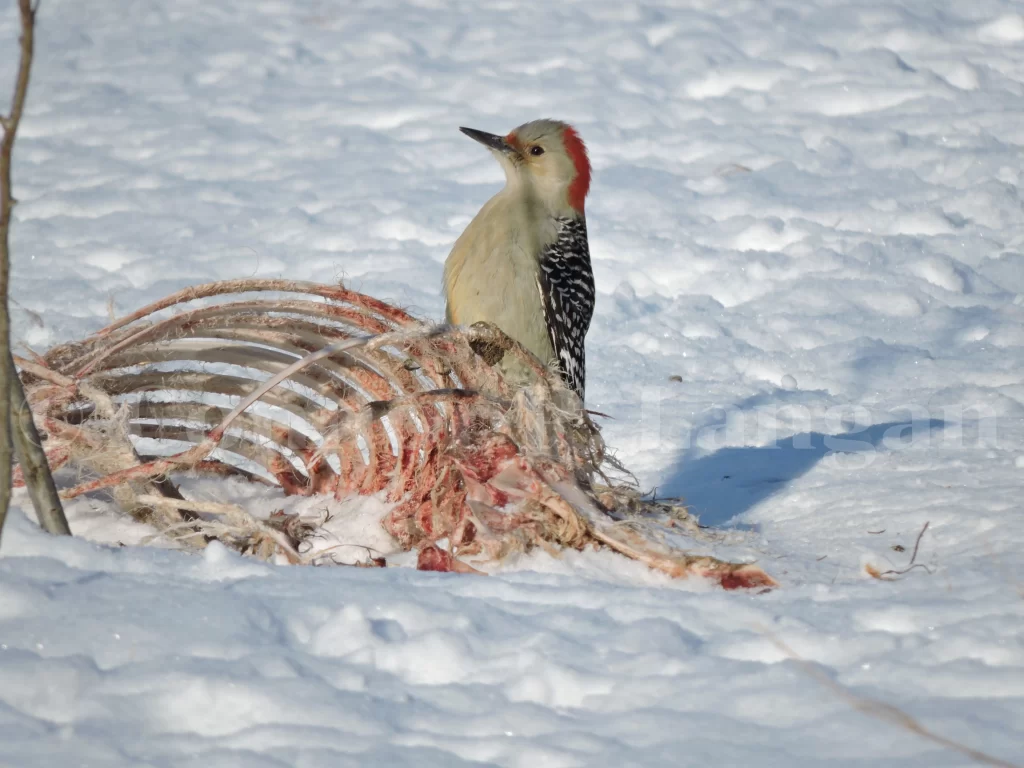
Red-bellied Woodpeckers are the most common woodpeckers in Arkansas, with more than 100,000 observations stemming from eBird checklists from the state. Indeed, Red-bellied Woodpeckers are familiar and easily recognizable Arkansas woodpeckers with their black and white backs and red hoods.
Red-bellied Woodpeckers are found all over Arkansas. Any of the forest types within the state can accommodate this woodpecker of Arkansas, and they are also present in smaller tracts of forested land such as parks and windbreaks.
These medium woodpeckers in Arkansas are year-round, nonmigratory residents of Arkansas. Many will recognize them thanks to their propensity to visit bird feeders.
Red-cockaded Woodpecker
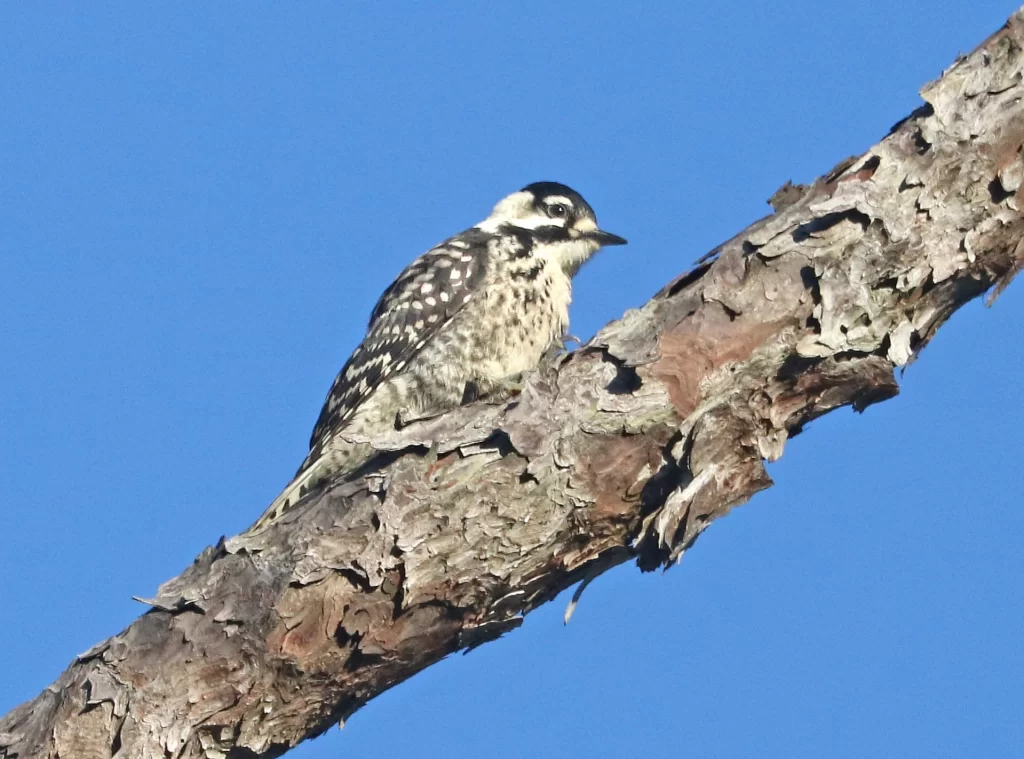
Red-cockaded Woodpeckers are the rarest Arkansas woodpeckers. In fact, there have been less than 1,000 observations submitted to eBird from this state. Red-cockaded Woodpecker populations in Arkansas have declined in the last half-century.
These woodpeckers of Arkansas rely on open tracts of pine trees; they cannot flourish in hardwood forests. Therefore, the specialized needs of this rare woodpecker in Arkansas necessitate conservationists to manage lands with fire to ensure that the habitats remain open enough to support these species.
Although managing Red-cockaded Woodpeckers is a challenge, there are several locations where these rare Arkansas woodpeckers can be reliably observed:
Warren Prairie Natural Area, Felsenthal National Wildlife Refuge, Ouachita National Forest
Red-headed Woodpecker
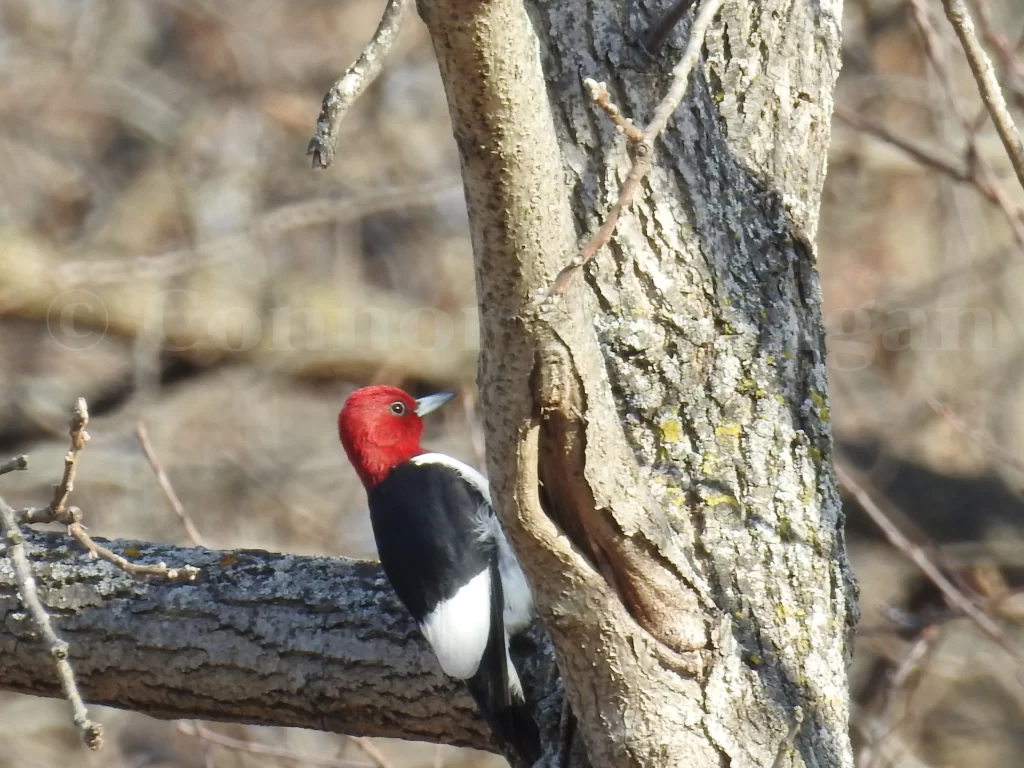
Red-headed Woodpeckers are gorgeous woodpeckers in Arkansas with checkerboard backs and stunning red heads. Some birds leave the state during the breeding season, but most remain here to breed.
Red-headed Woodpeckers prosper in open forests throughout Arkansas. Therefore, forests with mature trees and minimal understory are very appealing to these birds. The many acres of mixed pine and oak forest in Arkansas are optimal for Redheaded Woodpeckers.
Those who observe one of these Arkansas woodpeckers will likely consider them to be more active than the other woodpeckers in the state. Indeed, they regularly fly through the air to intercept insects that are flying by. Additionally, they are quite social, and their chattering calls can often be heard in the areas in which they live.
Yellow-bellied Sapsucker
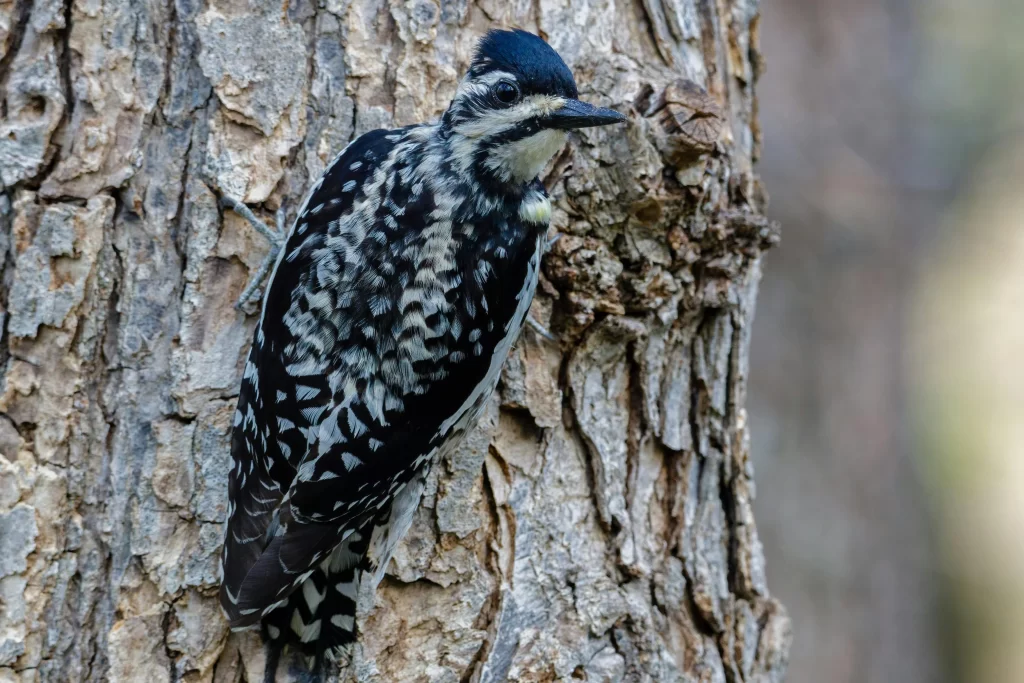
Yellow-bellied Sapsuckers are the only woodpecker of Arkansas included in the sapsucker genus. The population within Arkansas is entirely migratory, with birds leaving by mid-April to breed hundreds of miles away. Yellow-bellied Sapsuckers then begin to return in October.
This Arkansas woodpecker seems to prefer mixed woodlands, but they can also be found in largely deciduous or coniferous forests. Here, they make wheezy calls that give away their presence. In addition to extensive forests, look for Yellow-bellied Sapsuckers in parks or cemeteries.
A telltale sign of Yellow-bellied Sapsucker presence is several rows of closely-spaced sap wells drilled into trees. They create and maintain these wells to provide themselves with food during the winter. Yellow-bellied Sapsuckers largely rely on these wells for food, so they rarely visit bird feeders.

